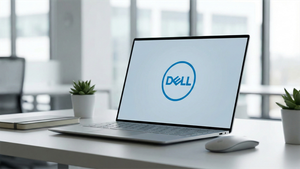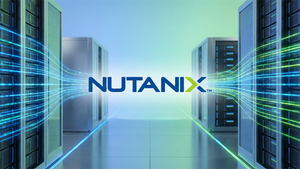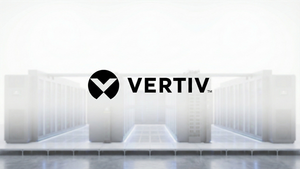Hollysys Automation Technologies Ltd. (NASDAQ: HOLI) (the “Company”) disclosed certain financial condition and results of operations for the six-month period ended December 31, 2020, together with its review and analysis of the comparable six-month period in 2019. The Company attempted to “highlight” selected financial metrics and sought to convince the public that the Company is on the right track under the current management. But a close look at these data actually reveals significantly deteriorating financial and operational conditions of the Company since the removal of previous management in July 2020.
Dramatic Increase in Accounts Receivable and Substantial Deterioration in Net Cash Highlight Financial Struggle of Core Business Activities
Revenue for the six-month period ended December 31, 2020 was $324.8 million while accounts receivable increased by $84.2 million during such period; revenue for the correlating period in 2019 was $293.3 million while accounts receivable decreased by $43.1 million during such period. Increase in accounts receivable represented approximately 26% of revenue for the six-month period ended December 31, 2020 while approximately –14.7% for the correlating period in 2019. Although the Company’s total assets grew by $208.1 million between July and December 2020, the increase in accounts receivable contributed to more than 40% of increase in assets. It is apparent that the Company’s modest growth in revenue and assets were largely due to a dramatic increase in accounts receivable, which is neither desirable nor sustainable.
Moreover, net cash provided by operating activities for the six months ended December 31, 2020 was $55.0 million, compared to $109.4 million for the correlating period in the prior year. Such a rapid and substantial deterioration in cash-generating abilities highlights the financial struggle of the Company's core business activities.
Poor Cost Control, Inadequate Investment in Core Technologies and Reduced Net Income
With selling, G&A and R&D expenses increasing across the board, total operating expenses increased by $11.1 million, or 21.4%, significantly outpacing the 10.7% increase in revenue for the same period. Such disproportional increase in expenses manifests the Company’s inability to control costs which is vital to the Company’s success. Further, although R&D expenses increased by 18.2%, the Company failed to invest in core technologies. The R&D section of the Company’s latest disclosure included no new technology or R&D initiatives since the removal of previous management. As a result of the Company’s poor cost control and inability to innovate, its net income dropped by 19%.
Slight Increase in Backlog Attributable Entirely to Prior Contracts under Previous Management
Although total backlog (unrealized revenue from earned contracts) increased by 2% from $587 million at the end of 2019 to $601.3 million at the end of 2020, only $170.1 million at the end of 2020 was attributable to new contracts signed between July and December 2020, comparing to $236.7 million at the end of 2019 from new contracts signed in the comparable period, a close to 30% decline. Concurrently, the backlog attributable to contracts signed in prior periods, but still uncompleted, increased from $350.3 million at the end of 2019 to $431.2 million at the end of 2020, a more than 23% increase. It is evident that the slight increase in total backlog was entirely attributable to prior contracts entered into under previous management.
J.P. Morgan Analysts’ Report and Lowered Price Target of $15 Per Share
On March 30, 2021, J.P. Morgan released its analysts’ report and lowered its forecast of the Company’s stock price from $16.1 per share (as of December 21, 2020) to $15 per share. J.P. Morgan stated in the report that the Company’s outlook “looks muted, in light of: 1) limited visibility with regard to CRC’s train procurement as order flow in 1HFY21 remained sluggish (-4.2% Y/Y); and 2) muted demand growth for China’s process automation demand during CY2021, particularly for the part of PA spend related to power plants, to which [the Company] has greater exposure.” It also noted that the Company’s stock price as of March 29, 2021 was at $12.64.
Statement of the Consortium
It is clear that existing management and the board of directors of the Company do not know how to run the business successfully. Since our last press release of March 21, 2021, the Company’s stock price has further declined. The closing price of April 12, 2021 dropped to $12.74, more than 25% lower than the $17.10 offer price provided in the proposal (the “Proposal”) by the buyer consortium consisting of Mr. Shao Baiqing, Ace Lead Profits Limited and CPE Funds Management Limited (the “Consortium”). The Consortium strongly believes that the $17.10 offer price provides a highly attractive control premium to shareholders, as evidenced by the Company’s dismal stock price and struggling operations and further supported by the price target of $15 based on J.P. Morgan’s DCF valuation model.
The board is obligated to fulfill its fiduciary duties and act in the best interests of the shareholders. To that end, the board should immediately convene a shareholder meeting for the shareholders to consider and vote on the Proposal. The board should also take all necessary corporate action to render the shareholder rights plan inapplicable to the Proposal as the Proposal offers all shareholders, other than the Consortium, with a compelling premium in a fair and equal manner and is not the type of takeover that the rights plan intends to prevent. Short of those actions, the board would find themselves at great risk of violating their fiduciary duties to the shareholders.
View source version on businesswire.com: https://www.businesswire.com/news/home/20210413006213/en/
Contacts
Jinxiang Guo, Executive Director
CPE Funds Management Limited
Phone: +86-10-8507-8517
Email: guojinxiang@cpe-fund.com






